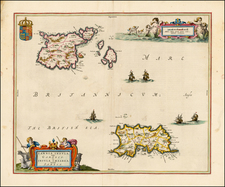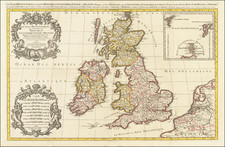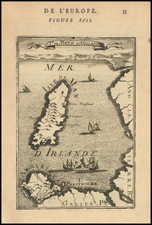The Tidal Chart of the British Seas, constructed under the direction of J. Scott Russell Esqr. F.R.S. ED. and designed by A.K. Johnston, F. R. G. S., is an illuminating cartographic representation of tidal patterns around the British Isles in the 1850s. This chart not only reveals the ebb and flow of the tides but also the depth of the seas, rendered through delineations signifying depths of 10 to 70 fathoms. The combined intricacies of the sea's hourly behaviors and depths at new and full moons encapsulate the meticulous scientific and cartographic endeavors of the Victorian era.
The 19th century witnessed considerable advancements in oceanography and tidal research. This interest was fueled, in part, by Britain's maritime prowess and the imperative for accurate nautical charts. The work of J. Scott Russell, a prominent figure in ship design and wave theory, highlights the synthesis of scientific exploration and practical application. His collaboration with A.K. Johnston, an esteemed geographer of his time, brought forth this chart as a testament to their shared commitment to precision and knowledge dissemination.
The specific annotations regarding the "rise and fall of spring tides in yards on the coast" and the clear indications of the depth of the seas showcase the dedication to detailed scientific representation. This methodology allows mariners, scientists, and scholars of the period to grasp the complex tidal behaviors around Britain, invaluable for navigation, trade, and broader maritime endeavors.
Furthermore, the engraving process overseen by W. & A.K. Johnston and the publication by William Blackwood & Sons, both based in Edinburgh and London, are indicative of the close-knit community of mapmakers, publishers, and scientists of the time. Their combined efforts brought to the fore an exceptional blend of scientific rigor and aesthetic appeal.
In the broader context, The Tidal Chart of the British Seas stands as a pivotal artifact, bridging the gap between the age of exploration and the burgeoning Industrial Revolution. It embodies the transition from the observational to the empirical, capturing the meticulous spirit of the Victorian age's pursuit of understanding and mastery over the natural world.










![[ Pictish Man Holding Severed Head ] Picti icon](https://storage.googleapis.com/raremaps/img/small/99837.jpg)
![[Jamestown, Saint Helena] Plan de la Forteresse et Bourg, De L'Isle De St. Helene](https://storage.googleapis.com/raremaps/img/small/77017.jpg)


